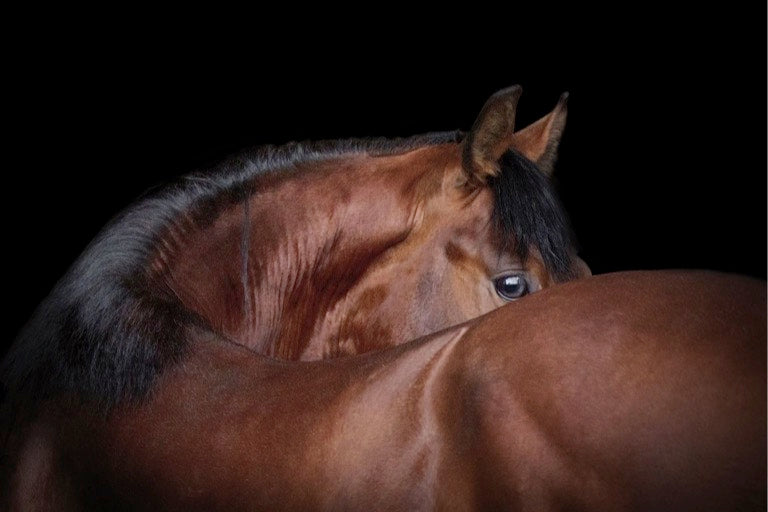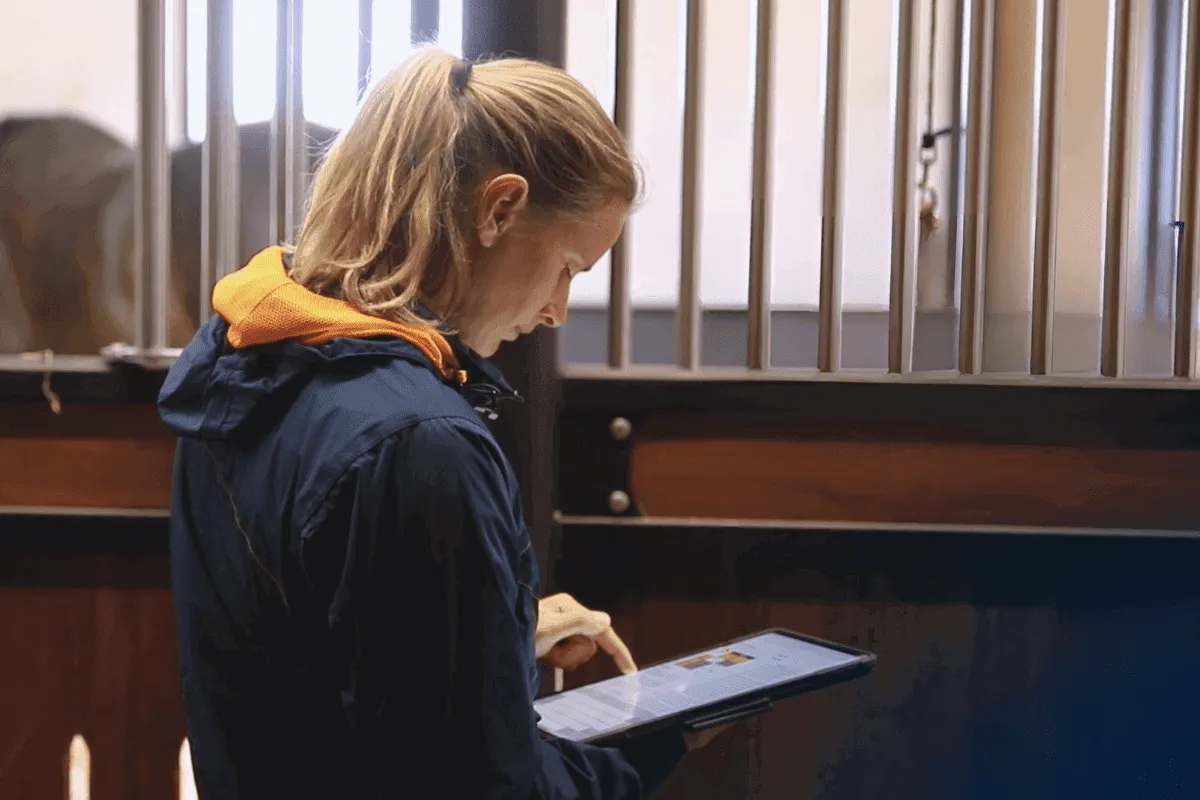Muscle power is everything. The muscles in the body help to support the skeleton of the horse. The better the muscles are developed, the more the spine and joints will be properly supported. A well-developed topline is essential for long term health and performance of the equine athlete. A horse’s topline is shaped by the muscles along the withers, back, loin and croup. Although the overall muscling can differ between horses, every healthy horse can develop a strong topline. The key elements are well-balanced nutrition in combination with proper exercise. In this article, Dr. Caroline Loos shares the secrets of how to build a strong topline.
To build the muscles that shape the topline, we need to provide the horse with the building blocks and the necessary energy to do so. These two elements come from dietary protein and calories.
Proteins for an overall health
Next to water, protein is the most abundant substance in the body. It is a part of nearly every tissue, including muscle, organs, brain, blood, immune cells, skin, etc. Therefore, paying attention to the quantity and quality of protein in your horse’s diet is not only important for building topline but also for overall health. Protein from the diet will be broken down into amino acids in the digestive tract which the body can then use to make new protein. An important thing to remember is that not all protein is created equally.
Only high-quality protein will be able to provide all the essential amino acids in the right amounts and ratio to efficiently build up muscle protein. Examples of high-quality protein sources to look for in your horse’s diet are soybean meal or ingredients such as potato protein, peas, beans and lupins. Despite some recent controversy regarding the use of soy in horse feeds, there is currently no scientific evidence of any negative effects on horse health. If properly sourced and processed (i.e. always use a reputable feed brand) and fed at appropriate quantities, soybean is a superior protein source to support top level animal performance due to its high digestibility and favourable amino acid profile.
Note that when it comes to protein feeding, quality is always more important than quantity. The higher the quality of the protein, the less is needed to meet requirements. Excess amino acids cannot be stored in the body and will simply be excreted. Therefore, overfeeding protein not only has little benefit, it can actually have adverse health effects in certain situations (e.g. liver problems, elevated insulin secretion, increased sweating, swollen legs, skin problems, etc.) and even limit growth and proper muscle building.
Essential amino acids in the right amounts
Necessity of energy
In contrast to what many people believe, there is more to building muscle than just feeding enough high-quality protein. In fact, the first limiting nutrient in a horse’s diet is always energy, as it is needed for every metabolic process in the body. Building and maintaining muscle, in particular, is energy costly. If the body senses there is not enough fuel to do so, it will prevent activation of muscle building processes. Moreover, prolonged energy-deficiency in the diet can lead to muscle breakdown.
So, no matter how much protein you feed, if energy is limiting, the horse cannot build muscle. Always make sure the diet meets the daily energy needs of the horse. Calorie-rich ingredients in horse diets are mainly grains (carbohydrates and sugars), oils (fat) and to a lesser extend highly digestible fibre sources. Lastly, various vitamins and minerals play a role in muscle building mechanisms in the body. Only well-balanced diets, supplying adequate amounts of energy, protein and essential micronutrients (i.e. vitamins, minerals and trace elements) will provide all the key nutritional elements to build a strong, healthy topline.
Principles of muscle building
There is still a common misconception that certain feeds or supplements will turn your horse into a body builder. Unfortunately, this is not true. Proper nutrition is essential, but strong musculature can only be achieved though the stimulation of adequate exercise. Intensive exercise will result in metabolic stress and micro damage in the muscles. In response to this, the body will trigger cardiovascular, nervous and muscle systems to make improvements so the horse is better able to handle the strains of the next exercise bout.
This adaptive response to exercise is the reason for increased fitness and muscle strength that occurs over time. However, continued improvements will only occur if the body is repetitively challenged by progressively increasing exercise intensity. This concept is called ‘progressive loading’. For our horses this means muscle development is only going to be evident by gradual increases in training intensity. If the exercise intensity remains too low, there will not be enough physical stimulus to trigger the body to build up more muscle.
Make the muscles work with some training
Ideal exercise program
To effectively build up topline, the exercise program should balance both the intensity and the type of training sessions throughout the week or month. It is important to leave adequate time between more intense exercise bouts to allow for proper repair and strengthening of the muscle fibers. If the horse is exercised before the muscle is fully recovered, it will be broken down instead of build up. To avoid a setback in muscle development, include 1-2 days of lighter exercise between high intensity sessions.
For the most effective results, you want a step by step increase in exercise intensity over time to maintain the proper progressive loading of the muscle. It is also important to exercise the right type of muscles. Although topline is associated with the muscles along the spine of the horse, it is in fact the core muscles that need to be developed to support the back. Improving general flexibility, strength and core stability is key to developing a healthy topline. Regardless of your discipline, frequently changing up the exercise routine is a good way to keep triggering the adaptive response, thereby continuously stimulating development of different muscle groups. Furthermore, variation in training will provide healthy mental stimulation and keep your horse happier and more focused. Work with a coach or trainer to develop an appropriate exercise program that fits both you and your horse.
Building up a strong topline can only be achieved with proper nutrition and exercise. High-quality protein and adequate calories will provide the building blocks and fuel to make muscle protein. Additionally, an appropriate exercise program is needed to stimulate the build-up and maintenance of the topline muscles. If your diet and exercise program are appropriate but your horse is still not building topline, seek advice from a veterinarian. Poor saddle fit, subtle lameness, pain, disease, viral infections, digestive problems or in some cases underlying metabolic disorders can undermine muscle development.




